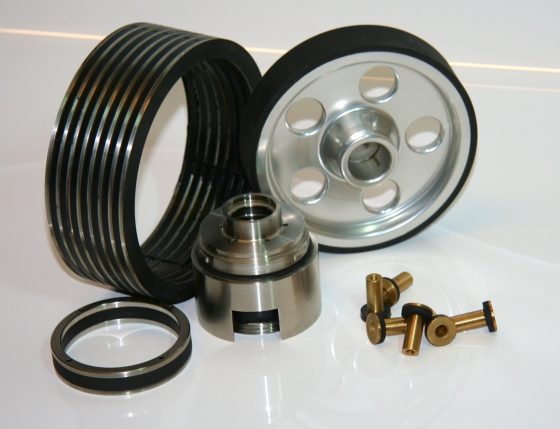Ask the experts at Martin’s Rubber: Rubber to Metal Bonding
Posted on 26/09/2019 Category: General Martins Rubber blog, Latest News, Martins Rubber News, Product & Application News, Rubber moulding, Technical Features

At Martin’s Rubber, we specialise in rubber to metal bonding. Our vulcanisation process is adapted to suit the unique chemical makeup of each type of metal. The more challenging the bond, the more advanced our methods become. We have been working through your rubber to metal bonding questions and have answered some of the most common ones below. Read on to learn more about rubber to metal bonding.
What is rubber to metal bonding?
Rubber to metal bonding is the process of fusing rubber and metal materials together to create one solid component. It is generally used to create bonded rubber seals and other components that are used across the motorsports, aerospace and defence industries, amongst others.
How do you attach rubber to metal?
Because of the different chemical compositions of rubber and metal, using an adhesive simply would not be sufficient in the bonding of rubber to metal if you want a secure join with the guarantee of strength. To successfully attach rubber to metal, the more technically advanced rubber to metal moulding and bonding process is recommended.
At Martin’s Rubber all our specialist rubber to metal parts are bonded using a very specific chemical procedure, which effectively joins the two materials as part of the vulcanisation process. This means that the bond is lasting, durable, and will not be affected by extreme temperatures or harsh environments.
How do you bond rubber to aluminium?
Aluminium, like all other metals, has its own chemical structure that is entirely different to that of the chemical composition of rubber. This means that the two materials cannot be fused together with an adhesive, as the bond would not last and would not be able to withstand a sudden change in temperature or any force on the bond.
To bond rubber to aluminium successfully it must be done as part of the vulcanisation process, which means the aluminium is sealed within (or at least to a part of) a suitable rubber moulding.
How do you bond silicone rubber to metal?
Silicone rubber should also be bonded to metal using the vulcanisation process. The two materials do not have the same chemical composition, so using an adhesive would not be successful. The adhesive would not be able to share atoms effectively with both materials, so the join would fail. Instead, silicone rubber should be joined to metal during the vulcanisation process to create a chemically bonded joint that is able to withstand pressure.
If you’d like to speak to the team at Martin’s Rubber about our product development and testing services, contact us on 023 8022 6330 or email [email protected].


